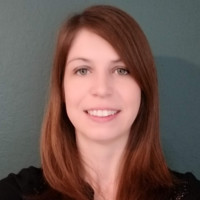
Stephanie R. Coffman
- Courses6
- Reviews25
- School: Clovis Community College
- Campus:
- Department: Biology
- Email address: Join to see
- Phone: Join to see
-
Location:
10309 N Willow Ave
Fresno, CA - 93730 - Dates at Clovis Community College: April 2016 - August 2019
- Office Hours: Join to see
N/A
Would take again: No
For Credit: Yes
1
0
Mandatory
Average
Prof. Coffman is very challenging. She isn't mean or evil spirited and she honestly wants us to pass, but her actions seem to show otherwise. Her grading is inconsistent and she doesn't even curve tests. My partner I answered the same but we got different grade on the exam. He is aggravating but not the worst.
Biography
Clovis Community College - Biology
Resume
2010
Doctor of Philosophy (PhD)
Genetics
Genomics and Bioinformatics
University of California
Riverside
2006
Bachelor of Science (B.S.)
Molecular
Cellular and Developmental Biology
California State University
Fresno
PCR
Laboratory
Science
Molecular Biology
Genetics
Caenorhabditis elegans RIG-I Homolog Mediates Antiviral RNA Interference Downstream of Dicer-Dependent Biogenesis of Viral Small Interfering RNAs.
Rui Lu
Wan-Xiang Li
Gina Broitman-Maduro
Hongshan Jiang
Jing Zhong
Xunyang Guo
Jinfeng Lu
Dicer enzymes process virus-specific double-stranded RNA (dsRNA) into small interfering RNAs (siRNAs) to initiate specific antiviral defense by related RNA interference (RNAi) pathways in plants
insects
nematodes
and mammals. Antiviral RNAi in Caenorhabditis elegans requires Dicer-related helicase 1 (DRH-1)
not found in plants and insects but highly homologous to mammalian retinoic acid-inducible gene I (RIG-I)-like receptors (RLRs)
intracellular viral RNA sensors that trigger innate immunity against RNA virus infection. However
it remains unclear if DRH-1 acts analogously to initiate antiviral RNAi in C. elegans. Here
we performed a forward genetic screen to characterize antiviral RNAi in C. elegans. Using a mapping-by-sequencing strategy
we uncovered four loss-of-function alleles of drh-1
three of which caused mutations in the helicase and C-terminal domains conserved in RLRs. Deep sequencing of small RNAs revealed an abundant population of Dicer-dependent virus-derived small interfering RNAs (vsiRNAs) in drh-1 single and double mutant animals after infection with Orsay virus
a positive-strand RNA virus. These findings provide further genetic evidence for the antiviral function of DRH-1 and illustrate that DRH-1 is not essential for the sensing and Dicer-mediated processing of the viral dsRNA replicative intermediates. Interestingly
vsiRNAs produced by drh-1 mutants were mapped overwhelmingly to the terminal regions of the viral genomic RNAs
in contrast to random distribution of vsiRNA hot spots when DRH-1 is functional. As RIG-I translocates on long dsRNA and DRH-1 exists in a complex with Dicer
we propose that DRH-1 facilitates the biogenesis of vsiRNAs in nematodes by catalyzing translocation of the Dicer complex on the viral long dsRNA precursors.
Caenorhabditis elegans RIG-I Homolog Mediates Antiviral RNA Interference Downstream of Dicer-Dependent Biogenesis of Viral Small Interfering RNAs.
Feng Chen
Zhe Xen
Yuanyuan Gu
The status of intestinal microbiota is a determinant of host health. However
the alteration of the gut microbiota caused by the innate immune response to virus infection is unclear. Caenorhabditis elegans and its natural virus Orsay provide an excellent model of host-virus interactions. We evaluated the intestinal microbial community complexity of the wild-type N2 and the innate immunity-deficient mutant rde-1 (ne219) strains of C. elegans upon Orsay virus infection. The gut microbiota diversity was decreased in rde-1 (ne219) mutant animals
and a large number of genes were associated with the difference between infected and uninfected rde-1 (ne219) mutant animals. Therefore
this study provides the first evaluation of the alterations caused by Orsay virus on intestinal microbiota in wildtype and innate immunity-deficient animals using C. elegans as the model species. Our findings indicate that virus infection may alters the microbiome in animals with defective immune response.
The Shift in the Intestinal Microbiome in the Innate Immunity-Deficient Mutant rde-1 Strain of C. elegans upon Orsay Virus Infection
Coffman
Integrative Institue for Genome Biology
Graduate Writing Resource Center
USDA-ARS
Clovis Community College
Graduate Student Association
California animal health and food safety laboratory
UC Davis
Boyce Thompson Institute for Plant Research
UCLA School of Public Health
California State University
Fresno
University of California
Riverside
Molecular Biology Discussion \nIntroduction to Cell and Molecular Biology Laboratory
University of California
Riverside
California State University
Fresno
Fresno
CA
Intro to Biology for Science Majors \nLab and TA coordinator Intro to Biology for Majors \nLife Sciences\nGenetics\nAnatomy and Physiology Lab
Lecturer
Boyce Thompson Institute for Plant Research
GSA Representative
Secretary
Seminar Committee Chair
Graduate Student Association
Student Assistant
California animal health and food safety laboratory
UC Davis
Graduate Writing Center Consultant
University of California riverside
Graduate Writing Resource Center
Graduate Student Researcher
University of California
Riverside
USDA-ARS
Parlier
CA
Bioscience Aide
Introduction to Life Sciences\nIntro to Biology for Science Majors \nHuman Biology \nHuman Physiology Lab \n
Clovis Community College
Student Seminar Coordinator
UC Riverside
Integrative Institue for Genome Biology
Field Researcher
UCLA School of Public Health
Possible Matching Profiles
The following profiles may or may not be the same professor:
- Stephanie Coffman
West Hills Community College - Biology
Possible Matching Profiles
The following profiles may or may not be the same professor:
- Stephanie R Coffman (60% Match)
Lecturer
California State University - California State University - Stephanie R Coffman (60% Match)
Adjunct Lab Instructor
State Center Community College District - State Center Community College District





